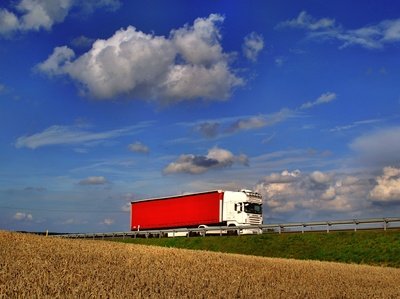According to a report by the European Environment Agency (EEA), published today, the transport sector’s transition towards sustainability is made difficult by the increasing transport demand and sluggish growth in sustainable transport modes for moving both people and freight.
The EEA report ‘Sustainability of Europe’s mobility systems’ sums up transport sector’s key trends as of 2024, and their environmental and climate impacts. The report shows that transport remains a major source of greenhouse gas emissions, air pollution and noise. While projections for 2030 and beyond show some positive signs, substantial investments in implementation of innovative solutions and a shift to more sustainable transport modes are still needed.
Road transport shows no sign of slowing down
Private cars are the dominant mode of passenger transport in Europe. In 2022, cars accounted for almost three quarters (73%) of passenger-kilometres travelled in the EU, and kilometres driven by car increased by 25% from 1995 to 2022. Meanwhile, the use of more sustainable public transport modes — buses, trams, metros — has remained stable.
Road transport is also the main mode of freight transport, accounting for just over half of total freight in the EU in 2022. Moreover, the absolute volume of freight transport on Europe’s roads has increased by almost two thirds since 1995.
Both passenger and freight transport are expected to increase in the EU in coming years with road transport maintaining its dominant position for the foreseeable future.
Heavy climate cost
In 2022, greenhouse gas emissions from transport in the EU were about 26% higher than in 1990. One of the main reasons for this increase is the growing transport demand, that more than offsets efficiency gains, for example in engine technology. The uptake of electric vehicles has shown promising signs in recent years, and the deployment of cleaner fuels can contribute to reduce CO2 emissions of transport modes that are hard to electrify. However, their deployment until now has been too slow to change the overall trend.
Adding to the challenge of reducing the sector’s greenhouse gas emissions, the demand for aviation has been growing rapidly in the EU. Excluding the COVID-19 pandemic years, the EEA report notes that demand for passenger flights grew by more than 140% from 1995 to 2019.
Relative to other economic sectors, transport accounted for about 29% of the EU’s greenhouse gas emissions in 2022. Its share is expected to increase further as the decarbonisation of the European economy progresses faster in other sectors, most notably in energy production.
With current and planned policy measures in the EU Member States, greenhouse gas emissions from transport are projected to decrease by about 14% in 2030 and by 37% in 2050, compared with 2022 levels. Stronger efforts are therefore needed to achieve the EU goal of reducing transport emissions by 90% by 2050.
Significant reduction of air pollution
The EU transport sector has succeeded in significantly reducing emissions of most air pollutants with policy measures, such as tighter emission standards, and technological development. The greatest share of this progress is due to reduced emissions in road transport and, for sulphur oxides, in maritime transport.
To speed up the green transition of Europe’s mobility system, continued public and private investment in innovation and technology are needed. For example, revenues from the revised Emission Trading System (ETS) and inclusion of road transport in the new ETS 2 present significant opportunities to speed up progress in the sector. However, investments need to be coupled with ambitious policy implementation to shift transport activity to more sustainable modes.











